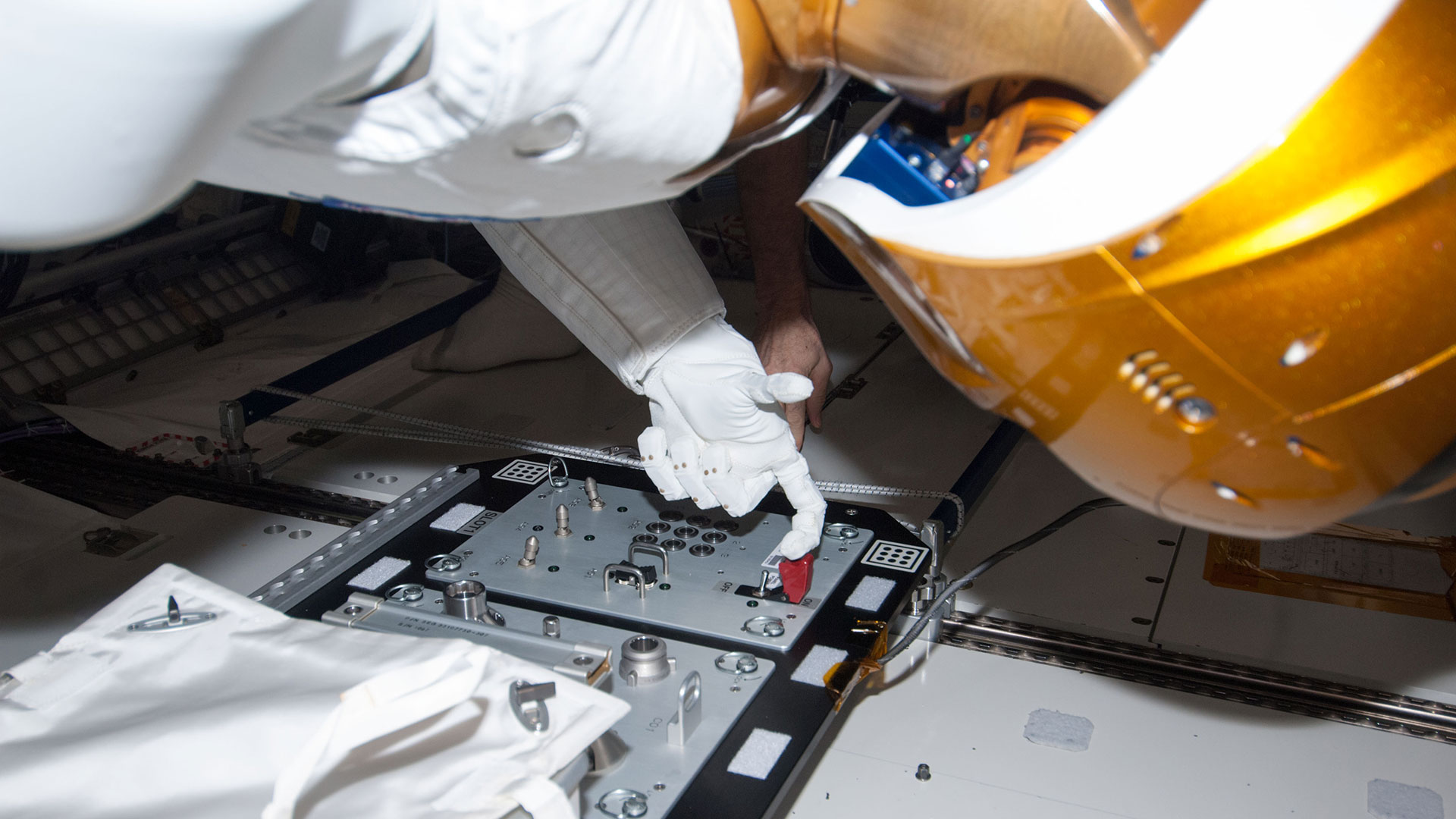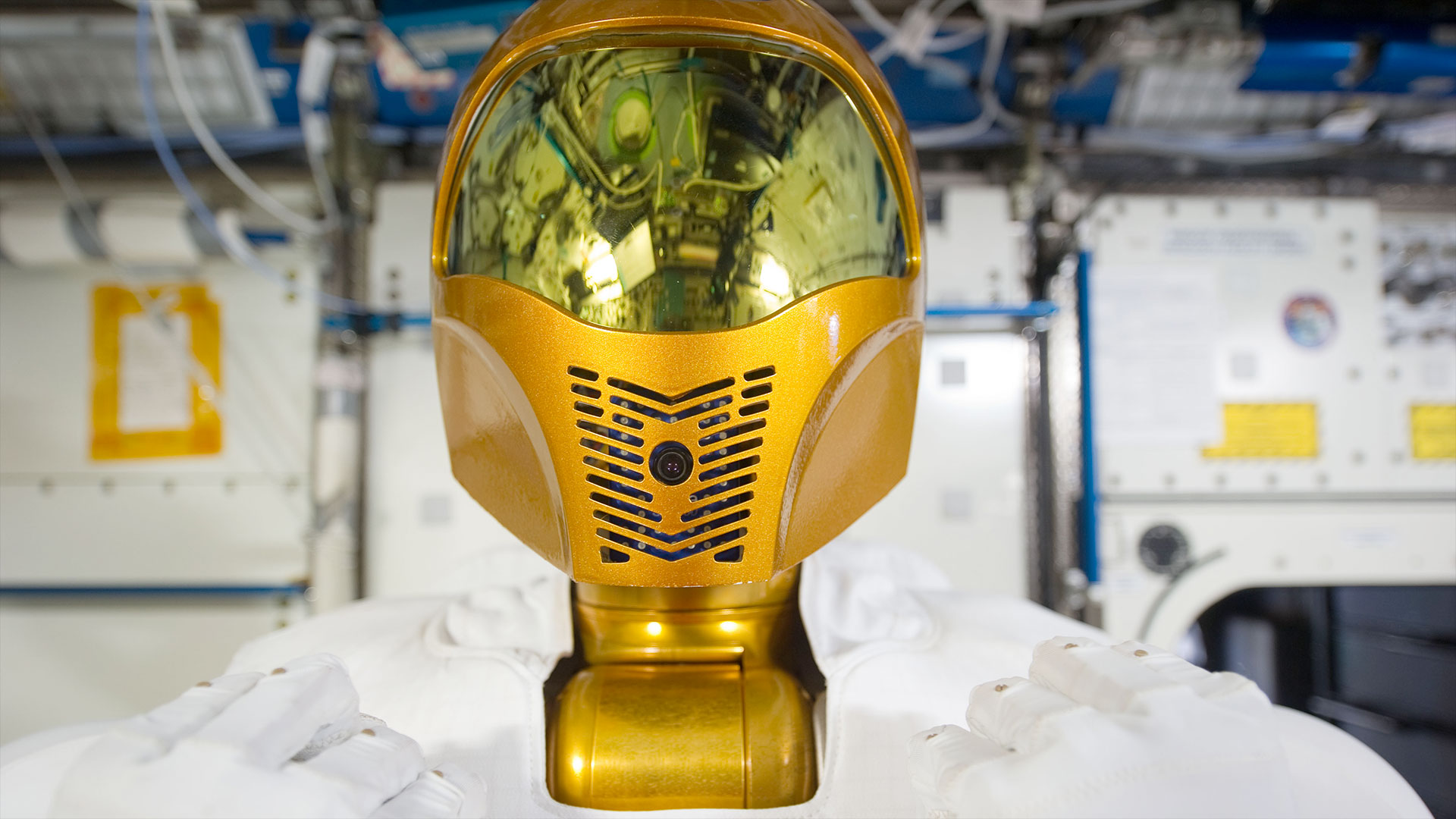NASA’s retired house shuttle Discovery has been reunited with considered one of its final crew members.
The Smithsonian’s Nationwide Air and Area Museum debuted Robonaut-2 (R2), NASA’s first dexterous humanoid robotic flown into house, on Thursday (Oct. 24). The 2-armed, two-legged robotic testbed launched to the Worldwide Area Station (ISS) aboard Discovery’s last mission in 2011.
R2 is now on exhibit on the Smithsonian’s Steven F. Udvar-Hazy Heart in northern Virginia.
“R2 is wanting straight at Discovery’s starboard aspect,” stated Jennifer Levasseur, house historical past curator on the Nationwide Air and Area Museum, in an interview with collectSPACE.com. “It’s has taken the place previously occupied by Gemini 7.”
NASA’s Gemini 7 spacecraft had been within the James S. McDonnell Area Hangar at Udvar-Hazy Heart because it opened in 2003. The 1965 two-seat capsule was relocated to the Air and Area Museum’s flagship constructing on the Nationwide Mall in Washington, D.C. to grow to be a part of the “Vacation spot Moon” gallery in 2022.
Associated: In pictures: Robonaut 2, NASA’s robotic butler for astronauts
R2 is exhibited out within the open subsequent to the Gemini paraglider capsule and Apollo boilerplate command module.
“R2 is behind boundaries, however like different artifacts in that space, it isn’t protected by glass or acrylic or something like that,” stated Levasseur. “I am actually excited to see the chances with that.”
“It has such an attractive, reflective visor. I believe there shall be some fairly unimaginable selfies to return from it,” she stated.
To house or the Smithsonian
Developed in partnership with Normal Motors and Oceaneering Area Programs, R2 was designed to check how human-like robots may assist astronauts with duties on an area station. Although by no means realized, NASA envisioned a day when R2 could possibly be moved outdoors of the ISS to carry out easy or routine duties, saving astronauts from performing some spacewalks.
Earlier than that would occur, R2’s element programs — from picture recognition to regulate algorithms — wanted to be verified in orbit. Working with a process board, R2 efficiently demonstrated that it was capable of press buttons, flip switches and switch knobs, in addition to deal with instruments. An ISS crew member was additionally capable of teleoperate R2, commanding it to catch a floating object.

When launched on Discovery’s STS-133 mission, R2 solely had an higher torso. Its two legs (“climbing manipulators”) had been added in 2014, which is when its issues started. The upgrades to assist R2’s new appendages triggered intermittent energy failures and, even worse, NASA’s makes an attempt to troubleshoot the problem precipitated extra electrical shorts.
As such, NASA determined to convey R2 again to Earth, so it may repaired and despatched again to house. In 2018, the robotic splashed down aboard a SpaceX Dragon spacecraft. The plan then was to rapidly service R2, so its testing may resume on the ISS.
As a substitute, it remained grounded at NASA’s Johnson Area Heart in Houston.
“Different issues took precedence,” Levasseur advised collectSPACE. “Principally, issues like a brand new bathroom and different crew gear took precedence, and sooner or later the choice was made to surrender on attempting to get it again on the station.”
The droid they had been in search of
R2, because it now stands on the Udvar-Hazy, is full.
“We now have the legs. It’s displayed as a single robotic, put collectively on considered one of its engineering stands. It has its legs and arms prolonged,” stated Levasseur.
It’s believed it is usually again to being totally purposeful.
“I consider it has been repaired to the purpose of being ‘operational,’ nevertheless it is not going to function whereas it’s right here,” Levasseur stated. “NASA engineers did activate sure joint programs through the exhibit’s arrange. They needed to peel off a number of the cloth overlay after which a number of the metallic or plastic panels that cowl the inside parts in order that they may activate the joints to have the ability to reposition the arms.”

Levasseur has spent the previous three years engaged on bringing R2 to the Nationwide Air and Area Museum. Technically, it may nonetheless be referred to as again into service.
“It’s on mortgage, so at the very least for the subsequent 4 years, it will likely be on show right here,” stated Levasseur. “NASA may recall the mortgage and go and doubtlessly fly it to the station, nevertheless it does not appear as if that is actually within the playing cards by way of the provision of room on a spacecraft to take it again up.”
“It has been accepted by our collections committee and authorized by the director — that occurred in 2021 — so the intention is, at the very least for us, we wish to see it transferred sooner or later,” she stated.
Observe collectSPACE.com on Fb and on X at @collectSPACE. Copyright 2024 collectSPACE.com. All rights reserved.





